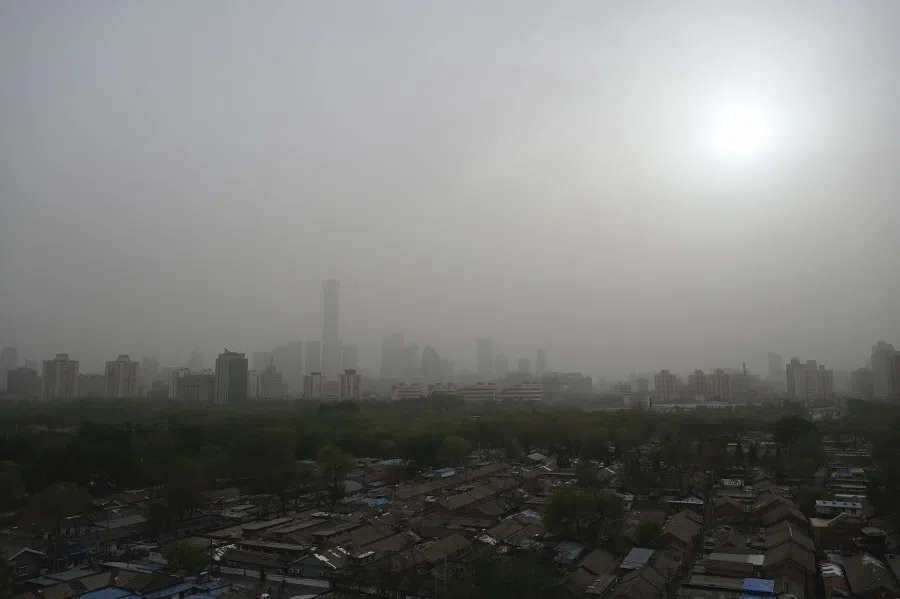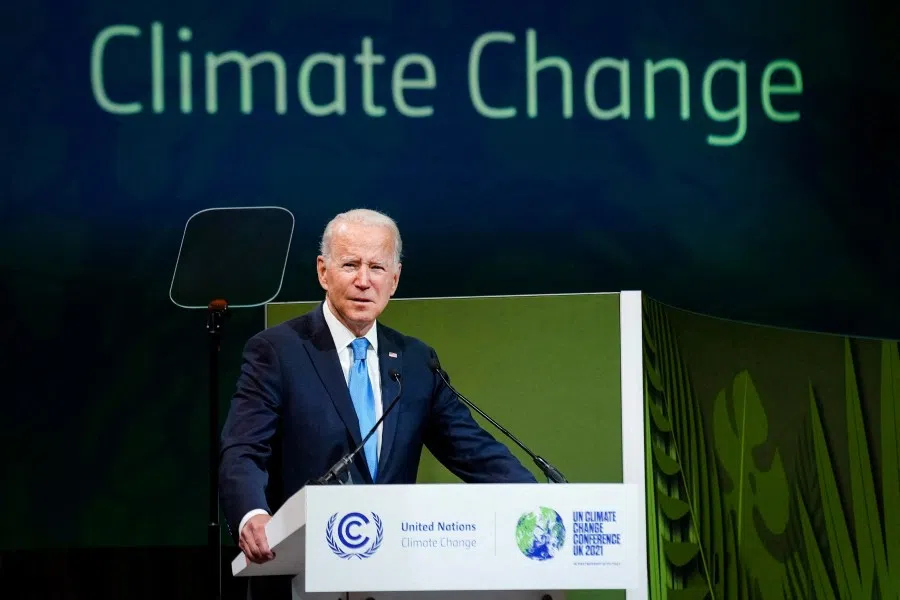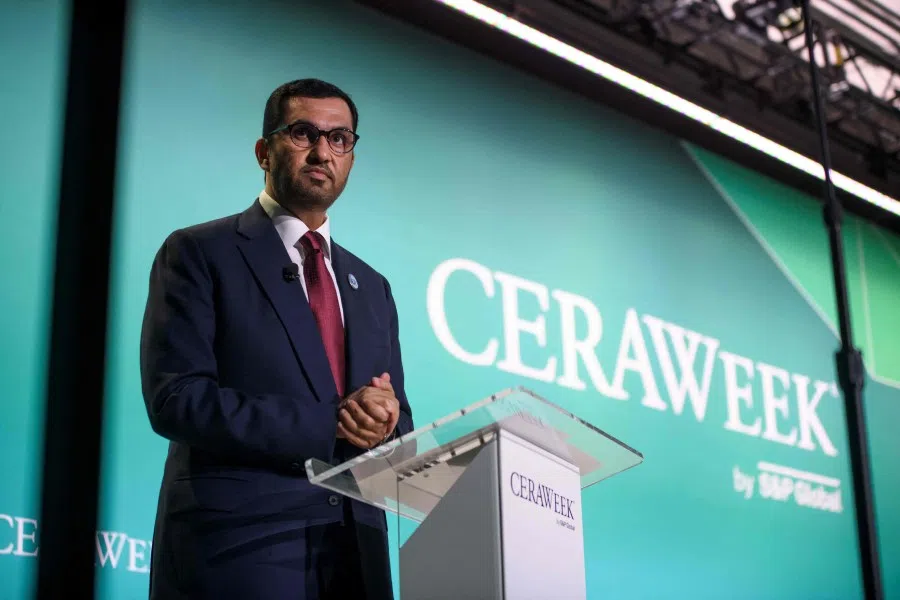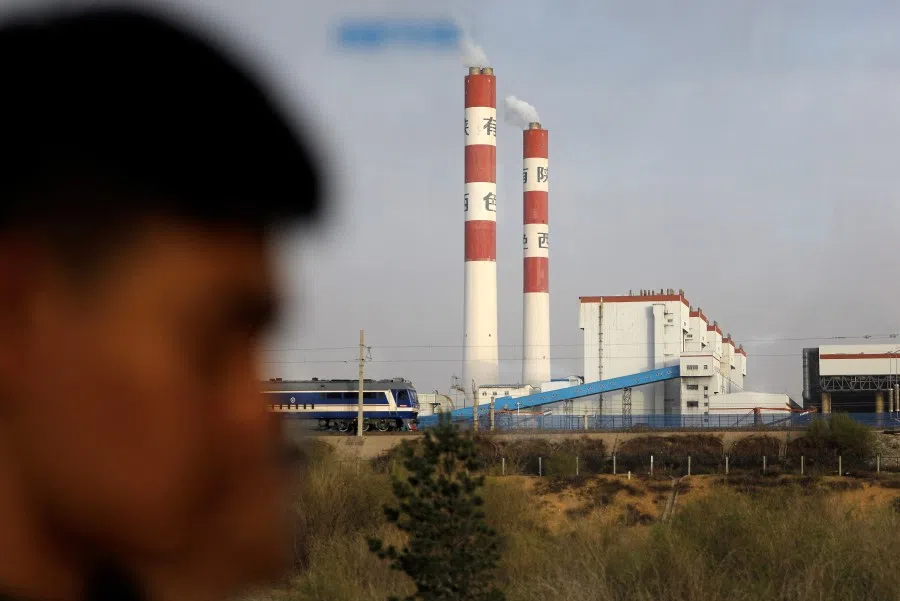China's struggle to meet 'dual carbon' targets and stand proud at COP28 climate summit
With just about six months to go to the COP28 climate change conference in Dubai, how is China stepping up its transition to a low-carbon economy and is it on track to achieve a peak in carbon dioxide emissions before 2030 and carbon neutrality before 2060?

China's climate policy has been launched on a challenging trajectory since President Xi Jinping announced in September 2020 that China had decided to achieve a peak in carbon dioxide emissions before 2030 and carbon neutrality before 2060. This decision quickly earned the nickname "dual carbon" (双碳 shuang tan) and became the core slogan for Chinese observers, researchers and policy makers engaged in the mitigation of greenhouse emissions and low-carbon development.
'1+N': working guidance and action plan
In the domestic context, researchers have been challenged to explore the feasibility of reaching the dual carbon targets and what the consequences would be for the energy sector, industries and consumers. Moreover, the decision generated the need for action from both the central government and local provincial or municipal authorities.
The Chinese Communist Party (CCP) Central Committee and the State Council issued the policy guidance document Working Guidance for Carbon Dioxide Peaking and Carbon Neutrality in Full and Faithful Implementation of the New Development Philosophy on 24 October 2021, while the State Council issued the Action Plan for Reaching Carbon Dioxide Peaking Before 2030 the day after.
These policy documents related to the dual carbon targets soon earned the intriguing nickname "1+N", where 1 stands for the working guidance document and N stands for climate action plans subsequently formulated for key sectors, policy issues, etc.

It is envisaged that the 1+N policy framework will provide detailed proposals to address longstanding problems in China's climate policies, such as phasing out coal and other fossil fuels in the energy system. This will not be easy, on account of the power industry lobby's influence and the leadership's fear of a new series of blackouts in the provinces and cities, similar to those that happened in September 2021.
China's brief fame of 'leadership' status
On the international scene, China enjoyed the brief fame of "leadership" status in global climate change policy discourse due to Trump's 2017 withdrawal of the US from the 2015 Paris Agreement, and following Xi's dual carbon commitments in 2020. It was envisaged that China was to become the leader in the global fight against climate change.
However, as academic Iza Ding argued in The Diplomat: "Leadership is not anointed by divine intervention, but ordained by practical necessity. Leadership that confers not status, but responsibility; leadership that is fulfilled not through symbolic rhetoric, but substantive action. This is what the international community is looking for when talking about Chinese leadership following the US withdrawal from Paris."
... the improvement of contacts... was again put at risk when the Chinese leadership on 5 August 2022 made the absurd choice to include mutual negotiations on climate change in the countermeasures against the US due to Nancy Pelosi's visit to Taiwan...

With President Joe Biden's decision that the US officially rejoin the Paris Agreement in 2021, new opportunities appeared for China and the US to move forward in global climate policy negotiations. For example, the renewed contacts resulted in the joint declaration on tackling climate change that China and the US released during the 2021 COP26 climate summit in Glasgow.
Unfortunately, the improvement of contacts between the US representative John Kerry and China's spokesperson Xie Zhenhua was again put at risk when the Chinese leadership on 5 August 2022 made the absurd choice to include mutual negotiations on climate change in the countermeasures against the US due to Nancy Pelosi's visit to Taiwan (how is climate negotiations related to Pelosi or Taiwan?).
Still lacking in commitment?
Kerry and Xie reconnected at the United Nations Framework Convention on Climate Change COP27 climate summit at Sharm el-Sheikh, Egypt, in November 2022, due to negotiations between Joe Biden and Xi Jinping at the G20 meeting in Bali, Indonesia, a week earlier.
Although the resumption of US-China contact on climate policy was helpful in coordinating the interaction of the two alleged superpowers, it had little impact on the outcome of COP27, which was overwhelmingly focused on creating a loss and damage fund and hardly brought the participating countries closer to reaching the 1.5 degree temperature limit that was the key ambition of the Paris Agreement.
China offered to voluntarily contribute to the activities of compensating for loss and damage, but without pledging any financial commitments to the newly established fund. Similarly, China's special envoy Xie Zhenhua dropped in on a COP27 meeting of participants in the global methane pledge, but without committing China - the world's largest methane emitter which has not yet signed the global methane pledge - to more than developing a draft methane reduction strategy.
China has undertaken a number of international activities related to climate policy, for instance, with the Brazil-China Joint Statement on combating climate change issued during Brazilian President Luiz Inácio Lula da Silva's visit to Beijing in April 2023. In addition to expressing a mutual resolve to eliminate global illegal logging and deforestation, the two countries wished to contribute to a successful COP28, with a focus on ensuring implementation.
Ambitions and challenges of COP28
The COP28 climate summit will take place in Dubai in the United Arab Emirates (UAE) from 30 November to 12 December 2023 and is expected to convene over 70,000 participants. According to the organisers, COP28 UAE will be a milestone moment when the world will take stock of its progress on the Paris Agreement.
The event will complete the first Global Stocktake (GST) that has been designed to provide a comprehensive assessment of progress since adopting the Paris Agreement. This is expected to help align efforts on climate action, including measures that need to be put in place to bridge the gaps in progress.
... the January 2023 appointment of Sultan Ahmed Al Jaber as president for the COP28 climate talks spurred further debate since he is also the head of UAE's national oil company.

The latest synthesis report by the Intergovernmental Panel on Climate Change (IPCC) has highlighted that human-caused climate change is already affecting many weather and climate extremes in every region across the globe. Global greenhouse gases (GHG) emissions in 2030 implied by nationally determined contributions (NDCs) announced by October 2021 make it likely that warming will exceed 1.5°C during the 21st century and make it harder to limit warming below 2°C. Therefore, there have been calls for COP28 to advance the efforts to reduce greenhouse gas emissions, both from representatives from Europe and in the US.
The choice of a major oil exporter like UAE as the host of COP28 has been controversial, and the January 2023 appointment of Sultan Ahmed Al Jaber as president for the COP28 climate talks spurred further debate since he is also the head of UAE's national oil company.
It had been a questionable decision to invite fossil fuel companies to participate in COP27, and the potential influence of fossil fuel lobbies during COP28 were seen by many as defeating the purpose of the climate summit altogether. Nevertheless, Sultan Al Jaber has emphasised the need for an inclusive, action-oriented approach to transform systems and accelerate trajectories in the fight against climate change.
Dependency on fossil fuels undermining goals
Sultan Al Jaber visited China in April 2023, meeting with Ding Xuexiang, the executive vice-premier of China, and Xie Zhenhua, the special envoy for climate change, among others. Discussions focused on partnerships around practical, concrete efforts in the run-up to COP28 for a step change to help achieve transformational climate progress.
Al Jaber declared during the visit: "Given the size of China's economy and the scale of its development of renewable energy and decarbonisation technology, China provides a good model for sustainable economic growth and the global energy transition."

In contrast, the Climate Action Tracker, an independent scientific project that tracks government climate action and measures it against the globally agreed Paris Agreement, found that China's updated NDC targets remained "highly insufficient" and if all countries followed the level of ambition implicit in China's climate policies, it would lead to a warming of 3°C degrees globally.
This assessment recognises that China's energy transition continues to build momentum, as highlighted by sectoral peaking plans and supercharged national and provincial ambition on renewables rapid scaleup, its dependency on carbon-intensive fossil fuels tend to undermine the goals of its dual carbon ambitions.
... with the Chinese government approving two new coal power plants per week in 2022.
Systemic and institutional failures in implementation
China emitted 27% of the world's greenhouse gases in 2019, accounting for more than the entire group of developed countries (including the US) combined. The country is currently running 1,058 coal plants - more than half the world's capacity - and the number continues to grow, with the Chinese government approving two new coal power plants per week in 2022.
Most of these plants are likely to run on a loss-making sub-optimal intensity level, like so many other Chinese coal-fired plants do currently, and are certain to end up as so-called "stranded assets" if China is serious about its pledge to become carbon neutral by 2060.
It is understandable that provincial governments are desperate to add electric power sources given that China suffered from climate change-induced extreme heatwaves and draught in the past year (reducing hydropower supply). But why does the National Development and Reform Commission approve these projects?
The national ETS suffers from... lack of fixed carbon emission caps, absence of auctioning for carbon emission permits, and poor benchmarking and certification procedures...

The Chinese leadership had great confidence that a national emission trading system (ETS) that was set up in 2021 to reduce emissions in the electric power sector would be able to contribute significantly to climate policy targets. But the ETS regulations in fact encourage the construction of new coal-fired plants, without significant incentives to remove or upgrade old plants.
The national ETS suffers from the same systemic and institutional failures that plagued many provincial pilot ETS in China since 2013, such as the lack of fixed carbon emission caps, absence of auctioning for carbon emission permits, and poor benchmarking and certification procedures. Moreover, an extension of the national ETS to cover other high-carbon emission sectors such as steel and chemical industries appears to have come up against bureaucratic barriers.
A climate hero in Dubai?
In other words, despite its upcoming status as a renewable energy and clean technology superpower, China is struggling with challenges in reducing its greenhouse gas emissions that appears insurmountable given the resistance of fierce power, coal, and industry lobbies together with provincial governments scared of popular unrest due to blackouts.
Although the international community can take comfort in China's dual carbon pledges and the surge of 1+N climate action plans, one wonders whether the results of the first and second phase of the Global Stocktake to be announced and debated at COP28 will confirm that China is a "good model for sustainable economic growth and the global energy transition" that Sultan Al Jaber witnessed in Beijing?
Certainly, it would be encouraging if China's representatives would distance their position from the unholy alliance of countries that are protecting fossil fuel interests and resisting any commitment to phasing out coal in global energy systems. In that case, China may regain the semblance of a climate hero again at COP28.
Related: China's push towards green energy accelerated by security concerns | China's hunt for strategic new energy minerals | Will China-US cooperation go beyond climate change? | Many challenges ahead as China promotes green hydrogen vehicles | A happy birthday to China's national emissions trading scheme | Net-zero CO2 emissions before 2060: Is China's climate goal too ambitious? | Can China keep its climate change promises?





